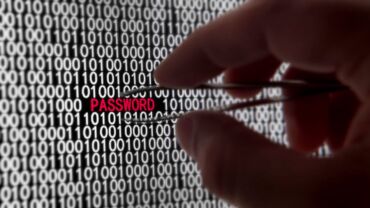US courts desperately need to modernize to meet the challenges of the digital age, and the Hon. Judge Victor Villarreal offers 5 steps courts can take toward that goal
Newly available technology, if adopted by courts and implemented correctly, eliminates wait times, increases participation, increases lawyer output, decreases litigants’ costs, increases judicial efficiency, and is ultimately in the interest of justice. There is, however, no single best pathway to court technology modernization. Rather, judges have creatively adopted strategies and technologies that best suit their courts.
The Thomson Reuters Institute report 2023 State of the Courts Report notes: “A majority — as much as 79% in some instances — of judges and court professionals say they are experiencing delays in their hearings. Often, these delays impact other cases slated for that week, creating a burden on the entire court docket.” In this climate, Hon. Judge Victor Villarreal, of Webb County (Texas) Court-at-Law II, maintains court case efficiency with no pandemic-related backlog. He attributes this, in large part, to creating a modern court that thoughtfully implements new technology.
In a conversation with Judge Villarreal, he explains the five basic steps he and his staff have implemented to create a modern court. Technology, he says, is important, but a modern court requires more than just buying popular technology products.
1. Staff up and staff correctly
Every court has staff familiar with current policies and procedures, which help implement seamless and efficient dockets. While it is important to retain staff, it is equally important for that staff to evolve and be placed in the optimal position to succeed. It is also important that the court creates a culture where the staff is “technology friendly.”
Hon. Judge Villarreal clarifies that being technology-friendly does not necessarily mean being tech-savvy. Staff must be willing to learn, discard old procedures, implement new ones and evolve. The courts’ efficiency and evolution are largely dependent on the willingness and ability of its staff to learn, adapt, and implement previously unknown procedures, ultimately to increase access to justice.
Creating this environment doesn’t require finding new staff or hiring technology industry professionals. Rather, this environment requires hiring, appointing, and promoting persons who are open to learning technology and evolving as they implement new policies and procedures based on available technology.
Once you have court staff with the proper outlook and motivation, the rest flows rather naturally. “Before you start picking out technology and before you start looking for stuff, you first need to assess who’s on your team; ensure that your team members support your ideals; that their goals are also to learn technology; and that they are motivated to investigate which technology is best,” he adds.
2. Test the products with the proper persons
There is no single, one-size-fits-all technology to modernize a court. In fact, although there are pathways to court modernization, there is a definite experimentation phase to get there. “As a court, as a judge, and as a team, you have to play,” Judge Villarreal suggests. Each piece of technology is different, so it is important to consider the problem you are attempting to alleviate and then play with the available solutions. Consider it a fun activity — figuring out together what best serves the process and what best breaks the barriers that you want to resolve.

For example, courts situated on or near the U.S. border often encounter the necessity for regular in-court simultaneous and consecutive interpretation. Judge Villarreal and his court staff have to take time to focus, research, and implement interpretation equipment. Failure to have functional software or hardware increases the time spent in a hearing exponentially. Investing a few hours for the proper software and hardware saves many hours later.
The staff of this court had to play with the different interpretation equipment and learn which solution worked best for the people using the courts. That time playing with the options proved invaluable to finding the solution that actually works to resolve the issue. While interpretation might seem like a simple issue, it is important that the solution be scalable. For example, just because you normally only need Spanish interpreters does not mean you will not need ASL, Korean, French, or some other foreign language interpretation in the future.
3. Convince courtroom users that the solutions are optimal
The next step: Get all stakeholders on board with the solution. No one person should have the authority to decide which solutions are purchased. Once solutions are vetted by the court, it’s important to communicate the advantages of the selected solution. It is then easier to convey the value in the solution. “Whether you’re a party, a lawyer, a witness, or you’re a county employee that provides judicial support to the court — from the clerks to the Sheriff’s Office, to pretrial services, and probation, all these other departments — they’ve got to know: Number one, why this is important and why it matters; and number two: how best to use it,” Judge Villarreal says.
Virtual hearing capacity, for instance, has been implemented widely for remote proceedings, but has other benefits. According to the State of the Courts report, respondents said: “Among the benefits to virtual hearings discussed in the survey were convenience and better attendance/participation by parties, which were the top ways that virtual hearings were said to increase access to justice.”
4. Everyone needs to know the technology and how it’s used
Once you implement the correct systems, it only works if you share the knowledge. This ‘spreading the word’ happens in multiple ways: creating written rules and communicating those to courtroom users. As Judge Villarreal’s court became more modern, he published an Administrative Order that explained the use of technology in his court. His order details remote participation requirements, online evidence sharing, hybrid hearings, recordings, and other provisions. Detailed orders like this are indispensable to making the technology and the modern court more accessible.
Attorneys are ‘frequent flyers; in the courtroom, so it’s important to familiarize them and ease them into its use. Attorneys, in turn, are responsible for preparing both their staff for electronic filing or digital evidence storage and their clients for the use of virtual appearances as appropriate.
5. Good habits create great processes
Finally, you must make the use of the new technology a habit, he says, adding that it is important to consistently follow the processes put into place to make the court both modern and efficient. And once you’ve created the right working atmosphere, researched the best technology for your court, taught court users on the new processes, then you repeat.
Conclusion
After you have followed the five steps to make your court more modern and efficient, you cannot rest on your laurels. It is important that the court stay in a state of evolution when considering and implementing technology, looking for problems to solve and inefficiencies to fix. This process can increase access to justice.
A final and poignant thought from Judge Villarreal is that the courts (i.e., judges) do not have to know everything. This modernization process can be overwhelming. The key is to keep taking the necessary steps and relinquishing some of the control — by trusting the people you’ve put in place and trusting the process.







